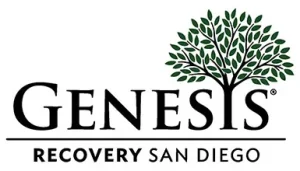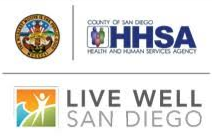They are called by different names: safe injection sites, supervised injection sites, supervised consumption facilities, or drug consumption rooms. These government-sanctioned facilities that allow drug addicts to shoot up in a clean, safe environment without fear of arrest. Users bring their own drugs, they are not provided, but needles, cotton, and other supplies are. They are not allowed to share drugs. Medical professionals supervise the sites and are on standby to administer naloxone in the event of an overdose. Staff members do not handle any drugs and are not allowed to provide assistance to users shooting up. Staff are allowed to offer advice and discuss treatment options with addicts who want to get help.
In Europe, Canada, and Australia, safe injection sites (SIS) have been operating for years. The first one opened in Switzerland in 1986. Here in the U.S. they are still illegal but several cities are considering opening them. With overdose deaths numbering in the tens of thousands each year, public health officials are considering new approaches to try and stem the tide. Studies on existing SIS have shown that they decrease deaths, emergency medical calls, and state health care costs. The European Union has an agency similar to our National Institute on Drug Abuse (NIDA), the European Monitoring Centre for Drugs and Drug Addiction (EMCDDA). Their findings show success with SIS in EU countries. Australia’s only SIS, in Sydney, has also reported positive results for addicts and the community where it is located. There are over 100 SIS in operation in several countries.
The EMCDDA has a detailed list on their website of the objectives of SIS. First and foremost is to prevent overdose deaths. They provide clean spaces and hygienic equipment. Addicts can consume drugs away from public areas, thus creating less public nuisance or disturbance. Staff can teach risk avoidance and care for abscesses. Some facilities may have food and drinks or be able to provide showers.
Despite the positive findings and reports, there is a lot of opposition in the U.S. to proposed SIS. The Justice Department is opposed on a national level, going so far as to make a statement saying health care workers at these facilities would face criminal charges. State and county levels of government have been blocking efforts even in traditionally liberal and progressive cities like San Francisco and Seattle. Local citizens are divided on the issue as well. Other cities where SIS are being proposed include Philadelphia, New York City, and Denver. One expert thinks that cities are holding off until some other city opens an injection site first. They want to see how the Justice Department will respond before they open themselves up to criminal or civil charges.
Behind the legality of SIS in the U.S. is a moral issue. There are valid arguments on both sides. Advocates of safe injection sites say the goal is harm reduction. The main purpose is to prevent overdose deaths and diseases from dirty needles. It isn’t to try to get people to quit or force them into treatment. Addicts cannot be forced into treatment and for those who aren’t ready, SIS offers them somewhere to safely use drugs until they are ready. They can’t get into treatment if they’re dead from an overdose. Addicts don’t have to shoot up in abandoned buildings or stairwells or in parks where no one can save them from an overdose. They don’t have to share or use dirty needles which can spread blood borne infections like Hepatitis C and HIV. While staff at these sites typically don’t push treatment on the clients, they can provide information and leads when asked. It’s a way to keep contact with a portion of the addict community.
The main argument against SIS is that they enable drug users. Rather than get addicts into recovery, the sites encourage them to continue using. Anything that keeps someone in active addiction is not a good thing. Some critics even say that sanctioned safe havens are tantamount to legalizing drugs. Drug users attract drug dealers and an injection site may draw criminal elements and violence around its location.
Something that really stuck out to me was what an addict interviewed in The Atlantic said in regards to addiction: “There is value in things being horrible.” I believe that to be true. An accumulation of negative consequences from using drugs is what gets people to want to stop and get help. If everything was going along fine in life, there would be no reason to stop using drugs. When things get bad really quickly for an addict it may be a blessing in disguise if it prompts seeking treatment before additional years of long, drawn-out suffering. That’s why, in support groups for the families of addicts like Al-Anon, they teach families to give tough love. Providing money or shelter or otherwise enabling the addict, even with good intentions, just keeps them in their disease. There’s a saying I’ve heard in recovery that “we don’t rob people of their suffering”. It’s the gift of desperation that gets people to want to make a change.
On the other hand, not all negative consequences are created equal. Losing a job or strained family relationships are never any fun but for most people, those problems are not on the scale of homelessness or serious prison time. People have different thresholds for pain. For some addicts, incarceration won’t slow them down one bit while others call it quits after their first stint in rehab. What I’ve never heard of is someone deciding to quit because they couldn’t find a clean needle or place to shoot up.
In everything that I read, articles and reports from the centers in Europe, Canada, and Australia, they all said that they have never had an overdose death. Overdoses occur regularly but having naloxone on hand and ready has kept people alive. Although the percentage of SIS clients who seek treatment is small, there is greater exposure to that option. Crime hasn’t necessarily been reduced in all cases but it hasn’t increased either.
In thinking about whether supervised injection sites are a good idea or not, it is important to keep the purpose in mind. They are not meant to be an answer to the opioid crisis and are not meant to treat addicts. It isn’t about encouraging or enabling. The purpose is harm reduction, to reduce the spread of disease and death in a high-risk population that isn’t easily accessible. When addicts are not ready to stop, they can at least be kept alive until, hopefully, they are ready. They are going to use regardless, why not make it as safe as possible?
That is an uncomfortable idea for many. How can we get behind a facility that allows people to continue to destroy their lives? SIS opponents in the U.S. government have said that allowing these sites would be giving up on addicts. I like what the MSIC in Sydney, Australia had to say. That facility is run by a Christian church. Basically, the sanctity of life and saving lives is what is most important. Even though they don’t approve of what these addicts are doing, expecting all of them to be ready for change or treatment is not realistic. The best way to care for them is to make what they’re doing safer and to have faith and hope that eventually they can change. It shouldn’t matter that we don’t approve of what they’re doing. It isn’t our place to judge or condemn. We should show the same love to each other that God shows to us.

